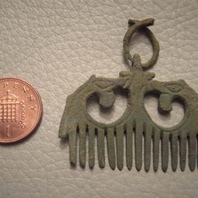
Viking Objects
Comb Pendant (NARC-B3E1B5)
This pendant is unusual for the British isles and has Eastern Scandinavian or Baltic origin. The pendant is decorated with Ringerike-style zoomorphic openwork ornament with a pair of inturning zoomorphic heads. Pendants were a popular dress accessory in Norway and Sweden and sometimes were worn with beads between a pair of oval brooches. In England, pendants did not have the same popularity and there do not seem to be any contemporary Anglo-Saxon pendants.
Read More
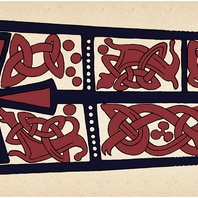
Viking Names
Bretby
The first element of Bretby, in the Repton and Gresley Hundred of Derbyshire, comes from either the Old Norse ethnonym Bretar ‘Britons’ or its Old English cognate, Brettas. The second element of the place-name is Old Norse bý ‘a farmstead, a village’. Traditionally, the place-name has been interpreted as referring to Britons who accompanied the Scandinavians in their settlements. However, the exact implications of such a name are not yet fully understood and are the subject of ongoing work by Dr Jayne Carroll of the Institute for Name-Studies, University of Nottingham.
Read More

Viking Names
Asvard
Ásvarðr is an Old Norse compound name from Ás- ‘a god’ and –viðr ‘tree, wood’. There is not much evidence for this name in Old Norse sources. However, there is an Ásvarðr in Norway in the tenth century mentioned in Njáls saga. The name is found as an element in the Danish place-name Asserbo and also found as the first element of Aswarby and Aswardby in Lincolnshire.
Read More
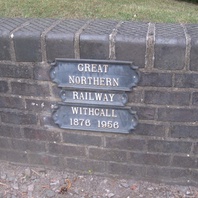
Viking Names
Withcall
Withcall, in the Louth Eske Wapentake of Lincolnshire, is a Scandinavian compound from Old Norse viðr ‘a wood; or a tree, a tree-trunk’ and Old Norse kjǫlr ‘a keel, a ridge (of hills)’, which is topographically appropriate.
Read More
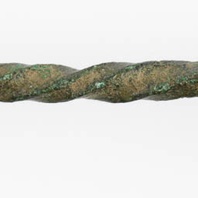
Viking Objects
Copper-Alloy Ear Spoon (CM_1849_2008)
This copper-alloy ear spoon has a spiral twisted body with a small rounded head. It was found at Torksey, Lincolnshire. Ear scoops (also known as ear spoons) were used to clean out ear wax. They are very common finds on Viking Age sites, suggesting that people took this aspect of personal hygiene very seriously.
Read More
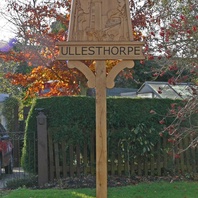
Viking Names
Ullesthorpe
The first element of Ullesthorpe, in the Guthlaxton Hundred of Leicestershire, is the Old Norse male personal name Úlfr (Old Danish Ulf), an original byname meaning ‘wolf’. It was a common name throughout the Viking diaspora. The second element is Old Norse þorp ‘a secondary settlement, a dependent outlying farmstead or hamlet’. The township names that line Watling Street and those to its north-east are predominately English in origin; however, Ullesthorpe, Catthorpe, and Bittesby are the exceptions. It is important to note that although Ullesthope has both an Old Norse specific and generic, Bitteby’s first element is Old English and Catthorpe’s is a feudal affix, which indicate only light Scandinavian settlement in the surrounding area. Ullesthorpe and Bittesby were formally a single land unit which Bittesby was later carved out. Ullesthorpe was likely the dependent village of Bittesby, and now has a narrow reach of land to its west which runs to Watling Street.
Read More
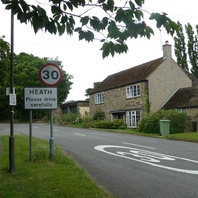
Viking Names
Heath
The eatlier name for Heath, in the Scarsdale Hundred of Derbyshire, was Lund from Old Norse lundr ‘grove, small grove’. Heath from Old English hǣð ‘heather; a tract of uncultivated land’ replaced the older name which remains only as a field name.
Read More
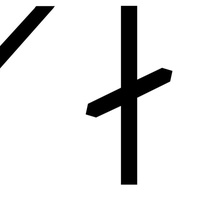
Viking Names
Skalli
Skalli an original byname meaning ‘bald-head’. It is recorded in Western Scandinavian mythology as the name of a giant, it is fairly common as a byname in Norway and Iceland. A few instances are recorded in runic inscriptions in Sweden and in Danish place-names. Skalli is the first element in Scawby, Lincolnshire, as well in several other place-names in Lincolnshire and Yorkshire
Read More
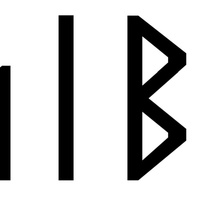
Viking Names
Sibbi
Sibbi is originally a short form of the Old Norse male personal Sigbjǫrn. As an independent name it is common in Sweden and fairly frequent in Denmark, and is recorded in a number of runic inscriptions. Sibbi is potentially the first element in the place-name Sibthorpe, Nottinghamshire.
Read More
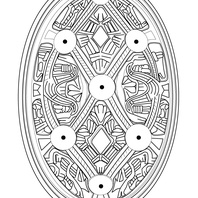
Viking Designs
Drawing of Oval Brooch
Drawing of an oval brooch based on examples for Adwick le Street, Doncaster. Brooches were a typical part of female dress. Scandinavian brooches came in a variety of sizes and shapes which included disc, trefoil, lozenge, equal-armed, and oval shapes. The different brooch types served a variety of functions in Scandinavian female dress with oval brooches typically being used as shoulder clasps for apron-type dresses and the rest being used to secure an outer garment to an inner shift. Anglo-Saxon brooches do not match this diversity of form with large disc brooches being typical of ninth century dress styles with smaller ones becoming more popular in the later ninth and tenth centuries. However, since disc brooches were used by both Anglo-Saxon and Scandinavian women they are distinguished by their morphology. Scandinavian brooches were typically domed with a hollow back while Anglo-Saxon brooches were usually flat. Moreover, Anglo-Saxon brooches were worn singly without accompanying accessories.
Read More

Viking Names
Brooksby
Brooksby, in the East Goscote Hundred of Leicestershire, is a difficult name. The first element is likely the Old Norse male personal name Brok which was originally a byname derived from Old Norse brók ‘breeches’. Alternatively it has been suggested that the first element is Old English broc ‘a brook, a stream (used of a stream with a muddy bed and a visible sediment load)’. This brook may refer to the River Wreake or more likely a small stream which rises near Brooksby. The first element could also be the Old Danish cognate brok ‘bog, marsh’ which is found in place-names in Denmark. However, these elements do not otherwise show a genitival structure whereas the personal name does. The second element of the name is Old Norse by ‘a farmstead, a village’.
